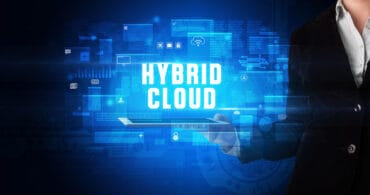
CSPs need to emulate successful hyperscalers by selling and globalizing via an operating model which enables rapid scaling of their own and partner solutions.
Cloud service providers (CSPs) have two choices, to do what they’ve always done and focus purely on connectivity or recognize the increased competition and follow the demand to build all-encompassing solutions that perfectly solve customer problems. Sounds straightforward, doesn’t it? That’s because it is.
The first choice is the default and sees CSPs preparing for an increased sophistication in connectivity solutions with a move to consumption and outcome-based models. However, it fails to reflect the reality: B2B customers want to buy simple solutions to problems rather than source different separate components from different vendors, stitch them together and continuously upgrade them. They want holistic solutions from a solutions provider who can ease the headache of managing multiple agreements for them.
The traditional “sell to” business model is broken. If CSPs want to be anything other than a wholesale of 5G and network-as-a-service, they must shift their focus from technology-driven innovation to business-driven innovation. They must do what the most successful players have already done – transforming from being a telco to a techco and looking to become the preferred solutions provider.
This approach acknowledges the increased competition in connectivity and takes advantage of the blurring of boundaries by orchestrating an ecosystem of partners to co-create perfect solutions tailored to customer challenges. By becoming a solutions provider and reacting to customers’ demand, these CSPs are best placed to retain and expand B2B customer relationships and replace connectivity revenues lost to competitors.
See also: 4 Tech Solutions Helping SMBs Thrive
Knowledge shared is knowledge squared
Hyperscalers and digital startups found the sweet spot for B2B selling by adopting multi-sided business models – which is great for selling digital solutions. And for any solution to be ‘just what the doctor ordered,’ it will require a much broader set of capabilities than any CSP has alone. By co-creating solutions with specialist ecosystem technology partners, not only does this shared specialism build knowledge of new markets and geographies for the techco, but it also becomes more profitable to co-create than to sell another company’s products.
See also: Emerging Trends on the Cloud Frontier
Mirroring the success of hyperscalers
CSPs need to emulate successful hyperscalers by selling and globalizing via an operating model which enables rapid scaling of their own and partner solutions. This means moving from project-based solutions to sophisticated digital product offerings.
There are many paths to follow when transforming into a techco. The first option is to embrace platform-based “sell with and sell through” multi-sided business models. Traditional linear CSP business models centralize power and decision-making by selling standard products to the customer using commission sales and paid marketing or wholesales. On the other hand, platform-based business models are very different. By working with a multitude of partners, CSPs can deliver more choice to their customers but also generate powerful network efforts – attracting more customers into an online community and driving further volume and scalability.
Some CSPs see themselves as a venture fund acquiring software, whilst others create a ‘Division X’ to define new ways of working with partners and customers. In reality, a winning strategy may be a combination. Regardless of the approach, CSPs need to sell online as successful hyperscalers have done. This means selling sophisticated digital products that are discoverable, consumable, and configurable online with assisted sales journeys at every step, from shopping cart to ecosystem orchestration and monetization.
See also: Move over Hybrid and Multicloud: Here Come Autonomous ‘Cross-Cloud’ Services
Keeping the customer at the forefront
Structuring the marketplace with a platform-based business model ensures CSPs can sell highly repeatable solutions online. CSPs can make use of product catalogs, APIs, multi-tenancy, and event hubs to develop highly composable solutions with high differentiation and customer value, such as PAYG manufacturing. This strategy allows the owner to connect to the needs of the buyers and sellers and shift from being a digital reseller to an ecosystem orchestrator. It allows them to build trust, a community, and network effects while removing paid marketing, lower CAC, and increasing customer lifetime value with near zero marginal costs of scaling.
As CSPs develop into techcos, they need to come to terms with the fact that they can’t do it alone. Becoming a global marketplace requires a collaborative and a multi-sided business model that allows them to work together with an ecosystem of partners. Adopting this model has extensive benefits, and if CSPs take the necessary steps now, they can frictionlessly develop in-demand capabilities and solutions across multiple industries in a global marketplace.
A successful digital marketplace centers on developing and selling solutions to meet specific business needs. The aim is to solve customer problems directly and, more importantly, minimize the headaches they suffer from when managing multiple technologies from a variety of providers – especially when they simply don’t have the technical expertise or economies of scale to do so themselves.




























